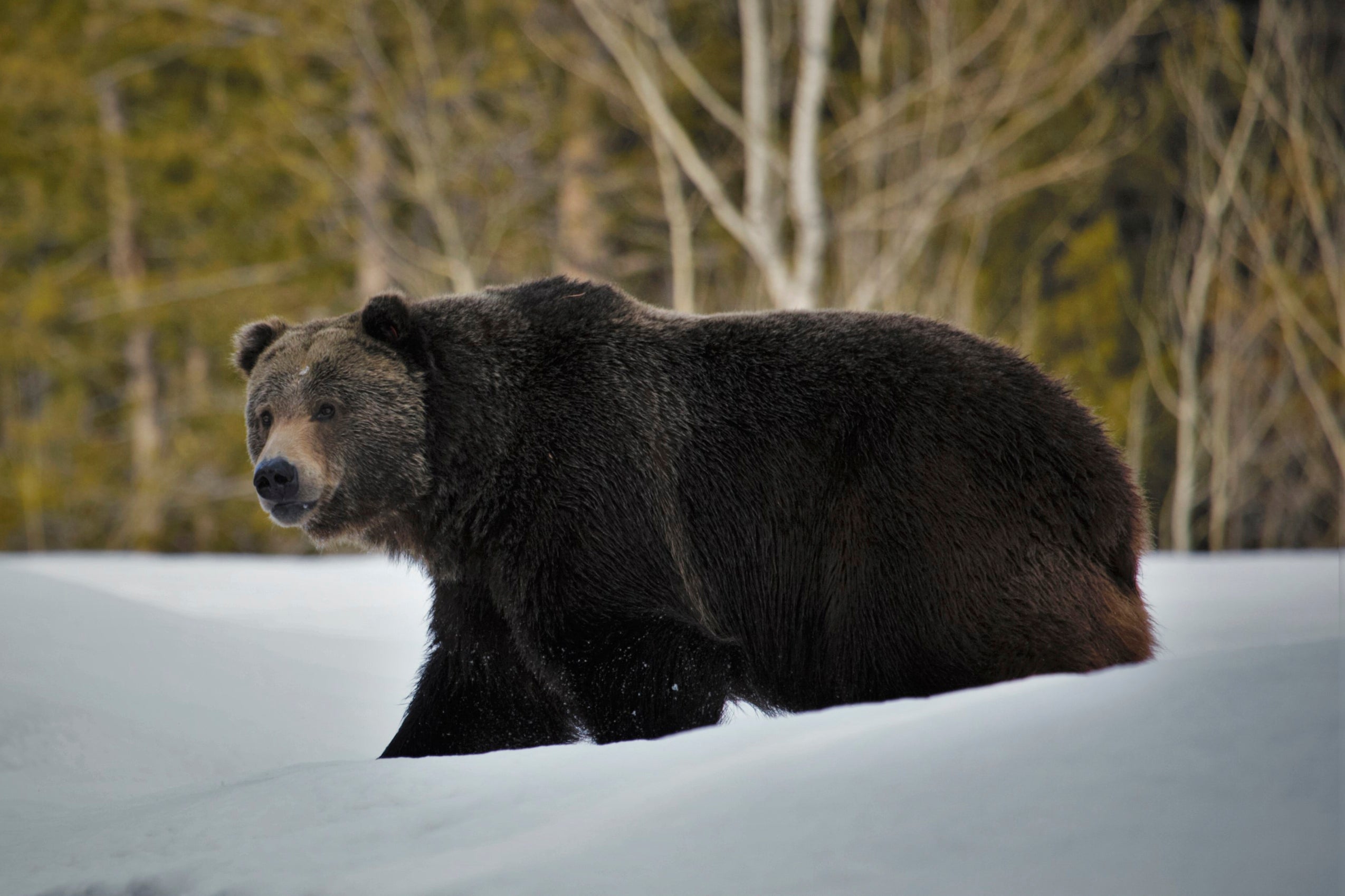Scientists: Grizzlies expand turf but still need protection
Grizzly bears are slowly expanding the turf they roam in the northern Rocky Mountains but scientists say they need continued protections, They have also concluded that no other areas of the country would be suitable for the fearsome animals

Your support helps us to tell the story
From reproductive rights to climate change to Big Tech, The Independent is on the ground when the story is developing. Whether it's investigating the financials of Elon Musk's pro-Trump PAC or producing our latest documentary, 'The A Word', which shines a light on the American women fighting for reproductive rights, we know how important it is to parse out the facts from the messaging.
At such a critical moment in US history, we need reporters on the ground. Your donation allows us to keep sending journalists to speak to both sides of the story.
The Independent is trusted by Americans across the entire political spectrum. And unlike many other quality news outlets, we choose not to lock Americans out of our reporting and analysis with paywalls. We believe quality journalism should be available to everyone, paid for by those who can afford it.
Your support makes all the difference.Grizzly bears are slowly expanding the turf where they roam in parts of the northern Rocky Mountains but need continued protections, according to government scientists who concluded that no other areas of the country would be suitable for reintroducing the fearsome predators.
The Fish and Wildlife Service on Wednesday released its first assessment in almost a decade about the status of grizzly bears in the contiguous U.S. The bruins are shielded from hunting as a threatened species except in Alaska.
Grizzly populations grew over the past ten years in two areas -- the Yellowstone region of Wyoming Montana and Idaho with more than 700 bears; and around Glacier National Park in Montana, which is home to more than 1,000 of the animals.
Grizzly numbers remain low in other parts of the Northern Rockies, and scientists said their focus is on bolstering those populations rather than reintroducing them elsewhere in the country.
Conservationists and some university scientists have pushed to return bears to areas including Colorado’s San Juan Mountains and California’s Sierra Nevada.
The 368-page assessment makes no recommendation on the topic, but scientists looked at the possibility of bears in more areas after the government was sued by environmentalists.
That analysis of potential habitat showed grizzlies would be unable to sustain themselves in the San Juans, the Sierra Nevada or two other areas that officials examined -- Utah’s Uinta Mountains and New Mexico’s Mongollon Mountains.
“They were looking for areas that could sustain grizzly bears as opposed to areas that would continuously need for humans to drop bears in there,” said Hilary Cooley, the Fish and Wildlife Service's grizzly bear recovery coordinator.
In each case, officials said, bears would face the same challenge: not enough protected public lands, high densities of humans and little chance of connecting with other bears populations to maintain healthy populations.
Tens of thousands of grizzlies once populated western North America before hunting, trapping and habitat loss wiped out most by the early 1900s.
Grizzly bears have been protected as a threatened species in the contiguous U.S. since 1975, allowing a slow recovery in a handful of areas. An estimated 1,900 live in the Northern Rockies of Wyoming, Montana, Idaho and Washington state.
The Center for Biological Diversity sued the Fish and Wildlife Service in 2019 in a bid to force officials to consider restoring grizzlies to parts of California, Colorado, New Mexico, Arizona, Utah, Nevada and Oregon. A U.S. District judge ruled last year that the government was not compelled to draft recovery plans for the bears in new areas.
Protections for bears in the Yellowstone region were lifted under President Donald Trump but later restored under a court order just as Idaho and Wyoming prepared to hold public hunts for grizzlies for the first time in decades.
Interior Secretary Deb Haaland who oversees the Fish and Wildlife Service, co-sponsored legislation to increase protections for bears while she was a member of Congress. She declined to say how she would approach the issue when questioned during her February confirmation hearings.